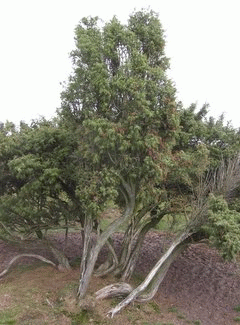

The Junipers - the tree at right may be read as "Allah" in Arabic (right photo courtesy: Autumn Sun and Autumn Colours (www.flickr.com)
The Juniper forests of Balochistan are an ecological and cultural treasure of the country. These rare and centuries old forests are located in Ziarat and Zargoon areas of Balochistan. Junipers are one of the slowest growing trees in the world and are therefore often called “living fossils” Although they are also found in some other parts of Pakistan, Balochistan’s Junipers are one of the biggest blocks in the world. But all that is slowly changing. Where there was lush green density only a few decades ago, one can now see wasteland patches. Similarly one can also observe lesser number of smaller offshoots around the bigger trees.
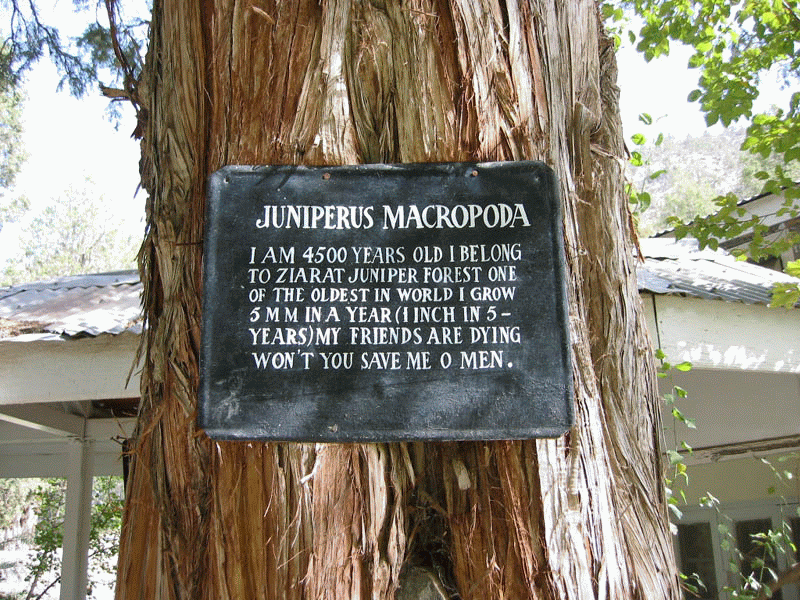
Near Ziarat, the second largest Juniper forests in the world after the Junipers of California, some as old as 57000 years are located. The hills around Ziarat are covered with juniper trees, thickest on the north, south and east sides. The juniper tracts along with its range lands, cover an area of approximately seven hundred thousand acres of which 2.30,000 acres are the State forest. Average age of the extremely slow growing juniper trees is 300 years. Juniper berries are used as flavor. Oil is also extracted from these trees which has a number of uses. Medical herbs like Epherda, Artimesia and mint etc are also produced. Fragrant lavender hushes cover almost the entire landscape from July to October.
However, almost 30-40% of this unique reservoir is suffering from a deadly disease "MASULLTO" (“Tasma Pa” in local language) for which there appears to be no remedy, except to cut down the infected part or the whole plant, besides being excessively cut by locals for use as firewood. Lot needs to be done to conserve this natural treasure. Read More about efforts at hand. Juniper trees grow an inch every year and is among the few trees that can survive the harsh desert conditions of Balochistan province. The trees divert rainwater into the ground, replenishing underground water supplies, which in turn, irrigate the soil. Juniper provide shaded walks and hilly tracks in different directions of the valley. Every walk unfolds a singular spectacle of exceptional scenic beauty.
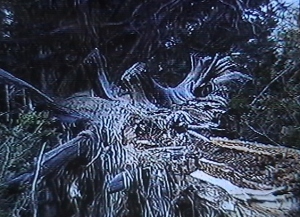
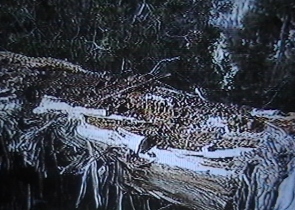
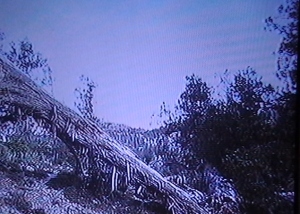
Studies also reveal that Zargoon is richer in plant diversity and in wildlife species than any area found anywhere in the Juniper ecosystem. Apart from its ecological significance, people living in the Zargoon Juniper mountains possess a rich indigenous knowledge of the local plant resources; a character that is eroding fast in the rest of Pakistan. WWF - Pakistan has already disseminated key information on Zargoon juniper forest and developed plans to continue its conservation efforts till these forests and other contiguous forest areas, such as Herboi of Kalat, are given adequate protection.
Although the Government of Pakistan in collaboration with the donor countries is making concerted efforts to save these forests and encourage the locals not to cut the trees for firewood and has attempted to help save the forest by providing 7,000 cylinders of free propane gas to discourage people from harvesting the juniper firewood for fuel. But due to non availability of gas refills, the cutting and the disease continues.
A number of programmes have been initiated by the Pakistan Forest Institute, the Forest Department of Balochistan and the World Wide Fund for Nature (WWF) to save Juniper Forests. The Forest Department is executing an extensive project under the Balochistan Natural Resource Management Project (BNRMP) while WWF Pakistan is working with the local communities to protect this natural heritage. The project is a part of WWF-Pakistan’s Environmental Education Programme. It focuses on conservation and environmental issues linked to poverty. The project was aimed at creating awareness among communities about the ecological importance of Juniper tract through meetings and workshops.
|
| HOME PAGE | MORE ABOUT OUR LAND | Copyright©JalalsPages - 2008 |
